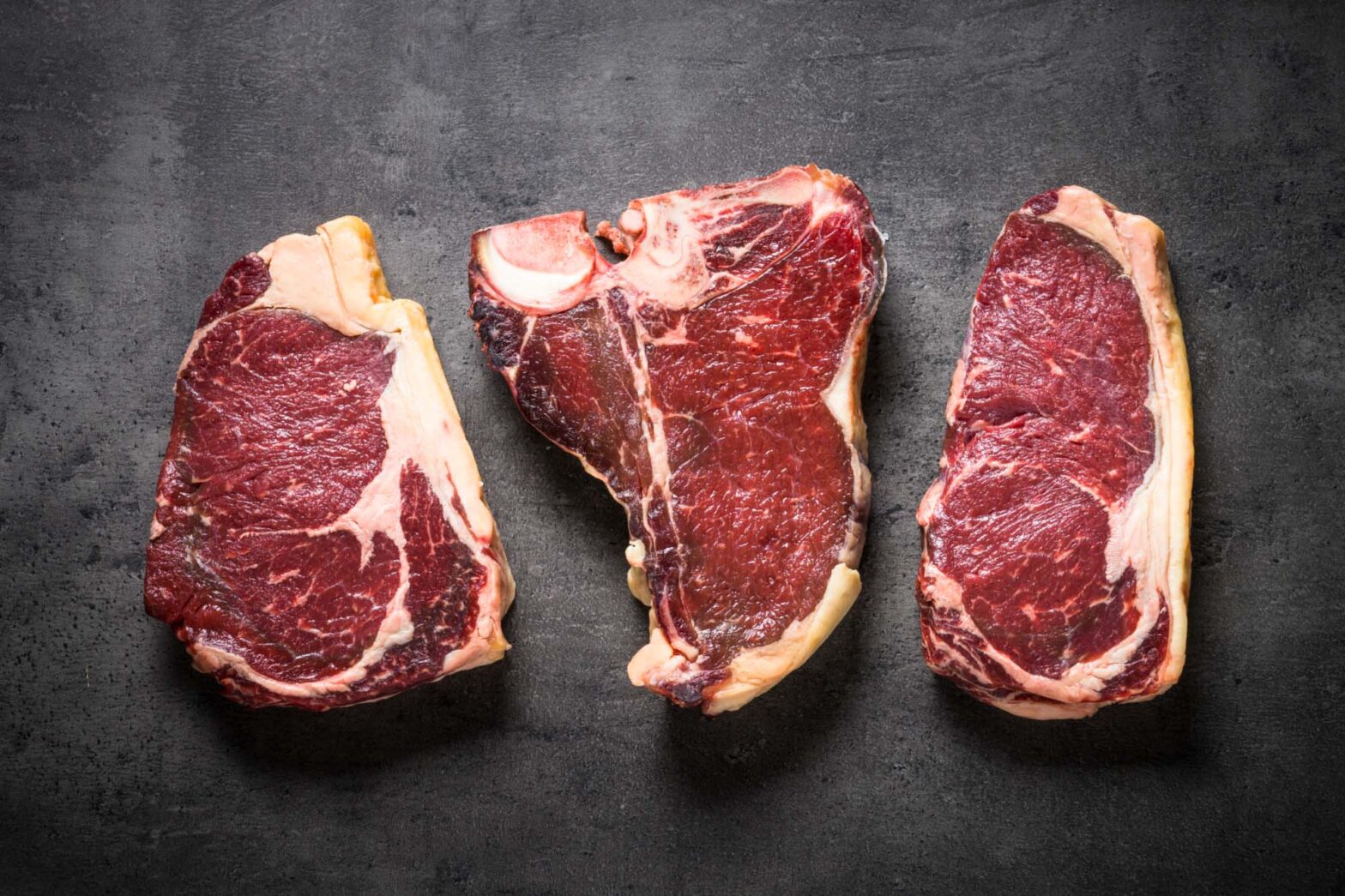There’s beef, and then there’s dry-aged beef. The dry aging works its magic on the meat, turning it dark red, making it as tender as can be, and giving it a rich, nutty flavor and inviting, meaty aroma that no wet aging technique can beat.
Of course, the great pleasures of dry-aged beef don’t come cheap. Depending on where you live and who you buy your meat from, an 1½-thick ribeye can set you back anywhere from a few dozen to well over a hundred dollars.
On some occasions, preparing dry-aged beef meal for the family can cost as much as—if not more than—your grill! So to get the most out of it, you have to do it right.
For the prudent griller, this begs the question: Can you grill dry-aged steaks?
Yes, you can grill dry-aged steaks, but be sure to prepare them properly. If you do it right, they will be fork-tender and mouth-watering delicious. If you do it wrong, they will dry out, toughen up, and taste like coal.
When grilling dry-aged steaks to perfection is the goal, let’s talk about the techniques you use to achieve it.
Bring the Steaks to Room Temperature
Just the other day, I took to the computer and typed up my musings on the subject of whether you should bring your meat to room temperature before grilling it or not.
Those of you who take a gander at this article will see that my answer is a clear and resounding “yes.” And for good reason: bringing meat to room temperature before slapping it on the hot grill cooks it faster, dries it out less, and makes it more tender.
Nowhere—and I mean nowhere—is this more important than with dry-aged beef. Much of the moisture has already escaped the meat during the dry-aging process, so you wanna retain as much of it as possible when you’re grilling it.
Remove the meat from the fridge 30 minutes before grilling and rest it on the counters, in the shade and covered with foil or parchment paper.
Don’t leave it out for too long, now. Dry aging takes place in special conditions, which you don’t have in your kitchen or backyard. The folks at the USDA warn that meat that’s sat out for longer than 1-2 hours becomes unsafe to eat, even after thermal treatment.
Salt the Steaks Right Before Grilling
There’s a technique called dry-brining that more and more grillers are using lately. You salt the meat with kosher salt or flake sea salt some 40-45 minutes before grilling it, which triggers the process of osmosis and tenderizes the muscle.
Dry-brining ameliorates every cut of beef… except for dry-aged beef.
When you’re grilling dry-aged steaks, skip the dry brine and salt the beef on both sides, liberally, right before putting it on the grill. The meat’s already tender and the flavor’s already rich, so you don’t want to overdo it.
Take my words with a grain of salt as you should. This is just an opinion and what appeals to me the most may not necessarily appeal to you as much. If you have the opportunity, try out salting your dry-aged beef a good while and immediately before grilling it, then decide which one you like more.
Grill the Steaks With Indirect Heat
Whereas regular steaks of 1-1½ inches of thickness are best grilled with high, direct heat, dry-aged steaks turn out best when cooked with moderate, indirect heat.
Direct heat, for those of you hearing this term for the first time, means grilling directly over the heat source, be it the glowing coals in your kettle or the lit burner on your gas grill.
Indirect heat is when you rake the coals over to one side or preheat your gas grill with only half the burners set to medium-high, then cooking your steaks in the area away from the coals or over the unlit burners, always with the lid closed.
This creates convection currents inside the grill that gently transfer heat to the surface of your dry-aged steaks, much like roasting in a 400°F oven. This gives the steaks time to cook through on the inside and form a crisp, flavorful, golden-brown crust without burning on the outside.
Use a Meat Thermometer
Seasoned grillers can tell the doneness of their meat just by looking at it. If you’re one of them, more power to you!
If you ain’t, use an instant-read meat thermometer. This is one of those gadgets (the fewer bells and whistles it has, the better; it’ll be exposed to high heat) that you poke into the center of the meat, then wait a couple of seconds till you get a reading of its internal temperature.
So how do you know when your dry-aged steak is done with a meat thermometer? As a general rule of thumb, 120°F is rare, 130°F is medium-rare, 140°F is medium, 150°F is medium-well, and 160°F is well-done.
I’m a medium-rare/medium kinda guy. Though, if you ask the federal government, we should all be eating our steaks cooked to a minimum of 145°F, especially those of us of age and/or with weakened immune systems, so keep that in mind.
Rest a Few Minutes Before Serving
Many a griller forget to rest their steak for at least 3 minutes before serving. The importance of the resting is not to be underestimated; it does a number of things to the meat.
For starters, it allows the protein to continue cooking in its residual heat. Pitmasters call this “carryover cooking,” and it takes place for a good few minutes after you remove your steaks from the grill.
In addition to that, it allows the rendered fats and gelatinized juices to settle inside the meat so that they don’t run out when you cut it. Only once they’ve found their rightful place should you send the dry-aged steaks to the table.

